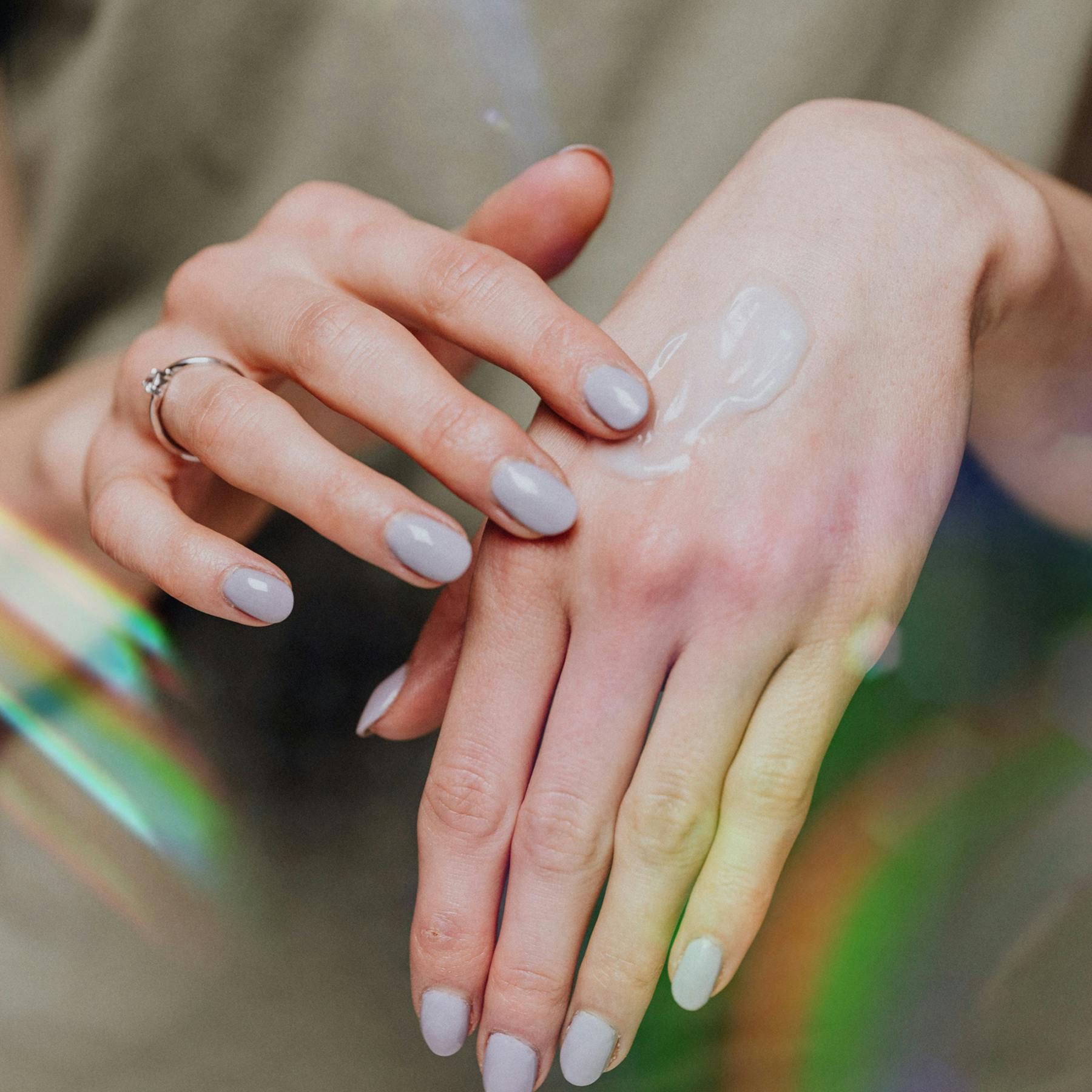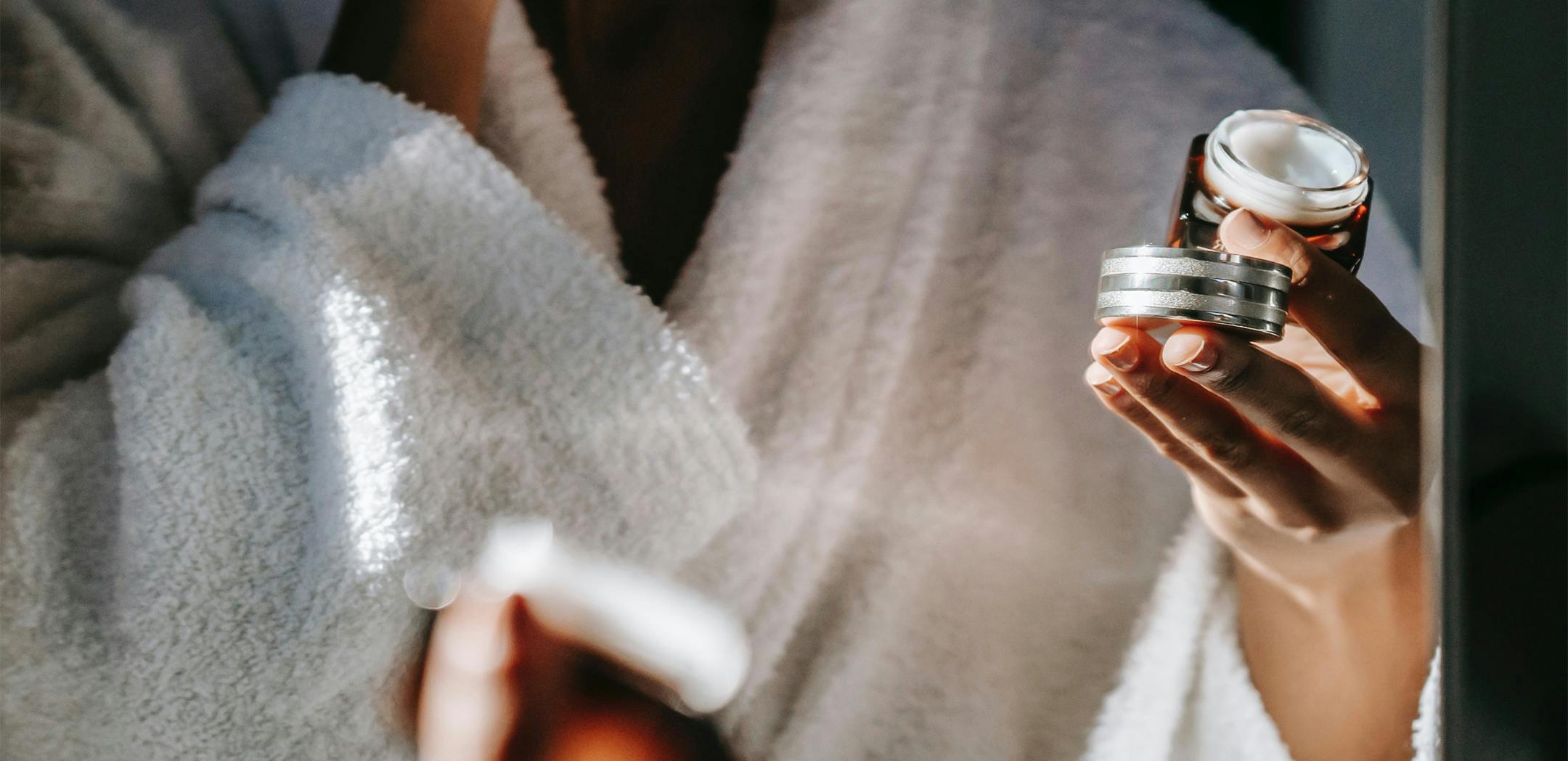Ready to unlock healthy, hydrated skin?
If you're looking for plump and dewy skin, cleansing alone isn't going to be enough. In fact, knowing the secrets to how, why and when to moisturise your face is what will help you unlock healthy, glowing skin.
And the benefits of moisturiser apply no matter what skin type you have. That's right - even oily, acne-prone skin types should be moisturising their skin on a daily basis.
The key to hydrated skin is understanding which type of moisturiser is right for your complexion and the steps to apply it correctly. Luckily, that's exactly what we will be covering in the article about how to moisturise skin and when it should be applied during your skin care routine.
How does moisturiser work?
Let's start with the science behind moisturising. Moisturisers are used to keep the skin hydrated, using a range of formulas and occlusive ingredients to support the stratum corneum (a.k.a. the outer layer of your skin).
This layer of your skin plays an important role in keeping your face protected from irritants and inflammation, while also helping to lock in moisture and hydrate the deeper layers of your skin.
By using the right facial moisturiser for your skin type, you can keep your skin's outer layer healthy and hydrated. This is especially important if you're using harsh cleansers or toners that may strip your skin of its natural oils and skin hydration.
Finding the right moisturiser for your skin type
We get it - there are so many different types of moisturisers on the market. The choices can be overwhelming, right?
Just like you should be choosing your cleanser based on your skin type, the same logic applies to finding the right moisturiser formula for your unique skin needs. That's because each formula will be packed with different ingredients with different benefits.
Not sure where to start? Here’s a quick guide to which moisturiser formulations will work best based on your skin type:
For oily and acne-prone skin
Look for light lotions and gel moisturisers that are non-comedogenic (translation: won’t block your pores or cause breakouts), oil-free and offer lightweight hydration without giving your skin a greasy feeling.
For dry skin
Dehydrated, dry and flaky skin needs extra hydration to repair the skin barrier, lock in moisture and restore skin health. Look for rich creams and nourishing ointments that will soothe and soften the skin, whilst steering clear of fragrances that might irritate your skin.
For sensitive skin
Treat tight, irritated or sensitive skin with gentle hydration in the form of creams and lotions that are free from fragrances, preservatives, alcohol and sulfates which may cause irritation to your delicate skin.
For combination skin
As one of the trickiest skin types, combination skin needs hydration in areas experiencing dryness as well as light-weight hydration in oily areas, too. It’s important to look for lotions that are oil-free, fragrance-free and can be applied to different parts of your face for the best results.
But no matter what skin type you have, a few helpful ingredients to look for in your moisturiser include:
- Hyaluronic acid
- SPF
- Vitamin C
- Vitamin E
- Glycolic Acid
- Retinol
These ingredients along with emollient ingredients such as shea butter, paraffin or beeswax, helping to reduce fine lines and wrinkles (the early signs of aging gracefully) and support collagen production.
Now, if you want an expert opinion and a handpicked hydrating moisturiser specifically matched to your own skin type, head straight to the Skin Quiz to receive your free recommendations. Or keep reading to find out more.
How to moisturise your skin correctly: a step-by-step guide
Think moisturising is as simple as applying lotion to your face? Think again.
Moisturising is an important step in your skincare routine and needs to be applied once the skin has been primed and is ready to soak in this helpful hydration.
Unfortunately, using too much (or too little) moisture can cause unwanted breakouts, irritation or dryness. So, let’s walk you through how to moisturise correctly and achieve glowing, hydrated skin with a few helpful tips.
Step one: cleanse your skin
Before you reach for your moisturiser, you need to ensure you have washed away the day (including any dirt, sweat, excess oils and impurities). Make sure you cleanse your skin twice a day (morning and night) using the right cleanser for your skin type.
But, there's no need to overdo it. When washing your face, steer clear of any abrasive scrubs or drying cleansers that will irritate your skin and cause redness. You may need to exfoliate lightly (to remove dead skin cells and smooth fine lines), however for healthy skin, try not to overdo it.
We all love hot showers, but cosmetic and clinical research suggests it would be wise to dial the heat down a notch and apply the cleanser to slightly damp skin rather than applying it to skin that has been overheated.
Step two: apply toners and serums
Now, it’s time to prime your skin for the hydration that’s coming up next. Depending on how many steps you want to follow in your skincare routine, the next product you’ll be reaching for is a gentle, hydrating toner.
A toner will help to prepare your skin to get the best benefits from your moisturiser or eye cream. When it comes to picking the right toner, you will need to be mindful of how it is formulated to ensure it delivers moisture.
Next, you’ll apply your serum (if you have one) to give your skin a concentrated dose of nutrients and antioxidants to address your unique skin needs.
Depending on your skin type, your serum might contain Vitamin C (to protect against damage and inflammation) or hyaluronic acid (to plump and hydrate your skin as you sleep).
Step three: apply spot treatments
If you’re navigating acne-prone skin, this step is just for you. Usually applied in the evening, spot treatments are used to tackle anything from zits to dark spots and even pigmentation.
These spot treatments typically include ingredients such as niacinamide to brighten the skin or even benzoyl peroxide and salicylic acid to kill acne-causing bacteria.
Again, make sure to apply this before your moisturiser to ensure these treatments get deep down into the skin and can work their magic.
Step four: hydrate the skin with moisturiser
Now, the moment you have been waiting for - moisturiser.
Ideally, you should be moisturising your skin twice a day (morning and night) to keep your skin healthy and hydrated.
In the morning, you can use a morning moisturiser such as a light lotion or formula that can sink into the skin (and can be worn under makeup, if needed). Most products contain a small amount of SPF, so you can rest assured that if you forget to apply sunscreen (hopefully you won't) you will still have a small amount of protection.
As for the evening, look for moisturisers that can help boost hydration and repair your skin overnight. Say goodbye to the stress of the day and let your body relax so that when you wake up from your beauty sleep, you will have supple skin, ready to take you on a new adventure.
And when it comes to applying your moisturiser, make sure to use gentle circular motions and focus on the driest areas of your skin (usually your cheeks). Don’t forget about your neck and chest either! Be sure to use gentle upward strokes to lift the skin (never dragging it down).
Step five: slap on SPF
Before you rush out the door, don’t forget to apply sunscreen to your skin, too. As the final step in your morning skincare routine, SPF will help protect your skin against harsh UV rays (which can age the skin and cause damage over time).
Again, look for a lightweight formula that is fragrance-free and able to be worn daily without clogging your pores. Trust us, your future self will thank you for it.
The perfect skin care regimen for you
And that’s a wrap! When it comes to hydrating your skin, understanding how moisturisers work, when to apply them and how to pick the right formula for your skin, you’ll be able to keep your skin hydrated and healthy. The trick to getting the biggest benefits out of moisturisers is to apply them in the correct order and make sure you’ve primed and prepared the skin properly beforehand.



